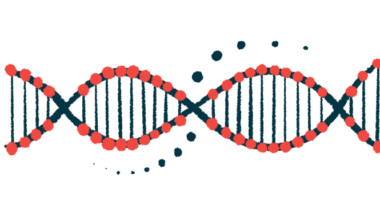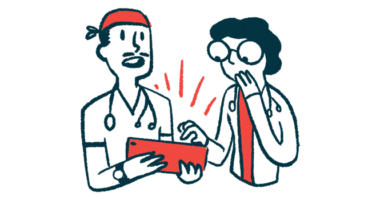Managing pain with Gaucher disease
Last updated April 2, 2025, by Agata Boxe

Pain is a common and often debilitating symptom of Gaucher disease.
It may manifest as bone pain, which is frequently caused by bone problems in the disease, or abdominal pain, which may be a result of fatty substances building up in the liver and spleen and enlarging them.
Treatments and lifestyle changes can help relieve your pain and enable you to better manage mobility issues. Your doctor can create a pain management plan based on your age and the exact cause and severity of your pain.
ERT and SRT
Your age partly determines the most suitable treatment for pain in Gaucher disease.
In children and young adults, enzyme replacement therapy (ERT) or substrate reduction therapy (SRT) often relieve pain.
ERT involves giving a version of the enzyme that is missing or not working correctly in people with the disease.
SRT partially blocks the production of the fatty compound that builds up in the bodies of those with Gaucher disease, namely in organs such as the liver and spleen.
Arthritis, osteoporosis, and other neuromuscular conditions can complicate treatment in older adults and for those in the advanced stages of Gaucher disease. Both ERT and SRT are unlikely to reduce pain because they cannot reverse the damage already made.
Other treatments available are pain medications and non-drug therapies.
Other medications
Pain from Gaucher disease varies in intensity, so your doctor will consider its severity when deciding on your treatment.
Milder cases of pain can be treated with painkillers such as nonsteroidal anti-inflammatory drugs, or NSAIDs.
For pain stemming from peripheral neuropathy, which occurs when the nerves are damaged, your healthcare provider may prescribe medications that belong to the class of antiepileptics or anticonvulsants.
For severe pain, your healthcare provider may prescribe opioids. Doctors carefully consider the benefits and risks of these medications before prescribing them because of their potential for dependency and addiction.
Non-drug therapies
Physical, occupational, and massage therapy, as well as electrical nerve stimulation, are some other ways to manage pain from Gaucher disease.
Physical therapy can help improve mobility and prevent joint stiffness, a common source of pain. A physical therapist can put together exercise routines that may help increase mobility by improving the range of motion in your arms and legs.
An occupational therapist can help find ways for you to do daily activities such as brushing your teeth, showering, and getting dressed without straining your muscles and potentially worsening pain.
Massage therapy can help relax your muscles. Your doctor may recommend having regular massage sessions with a therapist for pain relief.
Electrical nerve stimulation can help relieve pain by stimulating nerves and blocking pain. It involves delivering tiny electrical pulses to the skin via electrodes.
Your doctor may recommend combining several of these approaches to address pain as thoroughly as possible.
Lifestyle modifications
Pain from Gaucher disease can affect many areas of your life, including mental health. You may need to complement your treatment plan with lifestyle adjustments, such as managing stress and sleeping better.
Modifying your home and work environment can be helpful. Examples include:
- placing frequently used items in easy-to-reach places to prevent overexertion
- using an ergonomic chair and desk for comfort
- using heating packs, ice packs, or both for pain relief
- asking others for help with chores to prevent fatigue that can worsen pain
- staying warm in colder months by using heated blankets or space heaters, as low temperatures can increase bone pain and stiffness.
Stress from living with Gaucher disease can contribute to pain, so try to manage it as best you can.
For example, practicing deep breathing and mindfulness meditation daily for a few minutes can help you relax and boost resilience. Talking to a therapist can help you find long-term strategies to deal with stress.
You may also want to address your sleep schedule. Pain makes falling and staying asleep difficult. The resulting fatigue may worsen your symptoms the next day.
Maintain a regular schedule — and boost the quality of your sleep — by trying to go to sleep and get up at the same time every day.
Finally, social support can be invaluable in dealing with sleep and other Gaucher symptoms.
Those who have the disease can empathize with your experience and even share how they manage pain. You can meet some of them at virtual group calls through the Gaucher Community Alliance.
Gaucher Disease News also offers resources and the latest news in the field for those dealing with the disease.
Gaucher Disease News is strictly a news and information website about the disease. It does not provide medical advice, diagnosis, or treatment. This content is not intended to be a substitute for professional medical advice, diagnosis, or treatment. Always seek the advice of your physician or other qualified health provider with any questions you may have regarding a medical condition. Never disregard professional medical advice or delay in seeking it because of something you have read on this website.
Recent Posts




